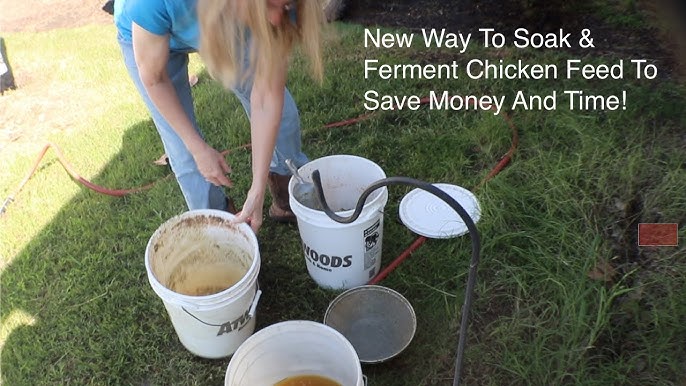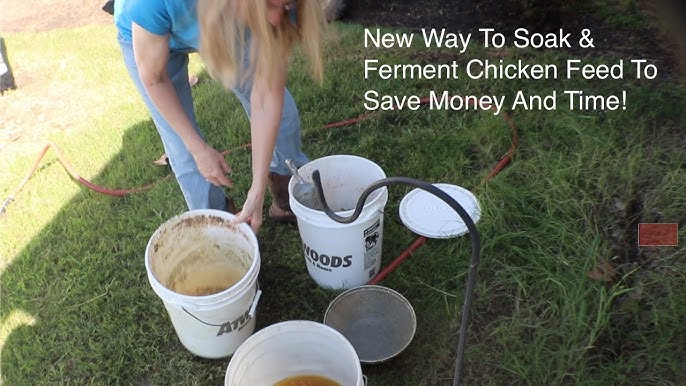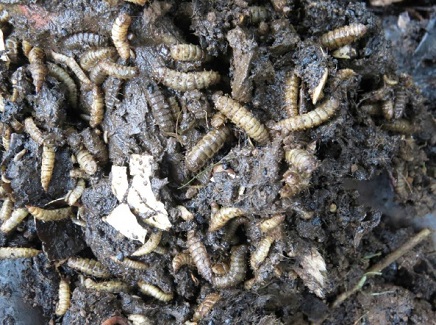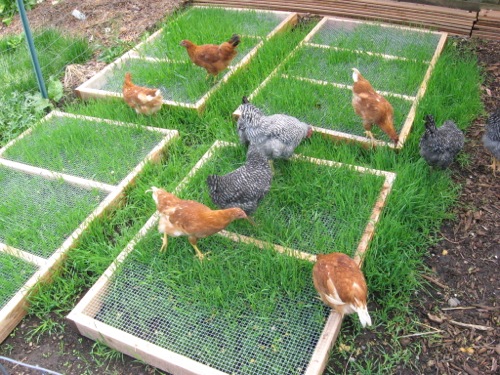
Thrifty Eggs: Tackling Skyrocketing Feed Costs on the Homestead
Chicken feed prices have surged by 30% in the last year due to a perfect storm of drought-impacted grain harvests, increased demand from industrial farms, and a sudden price hike in vital minerals. This is pushing the cost up to $28 per bag at Farmer McGregor's Feed & Seed in Oakhaven! For homesteaders dedicated to providing fresh eggs for their families and communities, this price surge presents a significant challenge. It demands creative solutions to maintain healthy, productive hens without breaking the bank. Are you ready to explore the ways to cut those feed costs?
The Feed Cost Crisis
The rising cost of chicken feed is a complex problem rooted in various factors. We're seeing significant price increases across the board. Corn, a staple in most chicken feed mixes, is up by 25% due to widespread drought conditions impacting yields. Similarly, soybean meal, a crucial protein source, has jumped by 18% due to increased global demand and export limitations. Even essential mineral supplements, like calcium and phosphorus, have experienced noticeable price hikes due to supply chain disruptions.
This perfect storm is forcing homesteaders to make difficult choices. Faced with these rising costs, many are considering three unappealing options: reduce their flock size, leading to fewer eggs; sell fewer eggs, decreasing their farm income; or find significantly cheaper feed options without compromising the health and productivity of their hens. The latter option is the only truly viable one for a thriving homestead. It's about more than just saving money; it's about resilience and sustainability in the face of economic pressures.
DIY Feed Fermentation: Unlock Hidden Value
Fermenting chicken feed is a simple yet powerful technique that can significantly reduce your feed costs while improving the health of your flock. Fermentation unlocks hidden nutritional value, making the feed more digestible and boosting the bioavailability of essential vitamins and minerals. This process not only stretches your feed further but also enhances gut health by introducing beneficial bacteria, leading to stronger, healthier hens that require less feed overall. Studies have shown that fermenting chicken feed can reduce overall feed consumption by up to 20% due to increased nutrient absorption.
Here's a step-by-step guide to fermenting chicken feed:
Supplies:
- Two 5-gallon food-grade buckets with airtight lids
- Non-chlorinated well water (chlorine inhibits fermentation)
- Unsulphured molasses (optional, but beneficial for adding nutrients and promoting fermentation)
Instructions:
- In one bucket, combine approximately 5 lbs of your regular layer feed with 1/4 cup of unsulphured molasses (if using).
- Add enough non-chlorinated well water to completely cover the feed, ensuring it's submerged by at least an inch or two.
- Stir the mixture thoroughly.
- Secure the lid on the bucket (but not completely airtight to allow gases to escape).
- Ferment the mixture in a cool, dark place (like a basement or shed) for 3 days, stirring daily to ensure even fermentation.
- After 3 days, drain the fermented feed using the second bucket and rinse it with fresh water before feeding it to your chickens.
Benefits of Fermentation:
- Increased Nutrient Bioavailability: Fermentation breaks down complex carbohydrates and proteins, making nutrients easier for chickens to absorb.
- Improved Gut Health: The process introduces beneficial bacteria (probiotics) that support a healthy gut microbiome, leading to better digestion and stronger immune systems.
- Reduced Feed Consumption: Because the nutrients are more readily available, chickens require less feed to meet their nutritional needs.
- Enhanced Palatability: Fermented feed is often more appealing to chickens, encouraging them to eat more and get the nutrients they need.
- Higher Hydration: The extra water content helps keep your flock hydrated.

Troubleshooting:
- Mold Growth: Prevent mold by using clean buckets and ensuring the feed is fully submerged in water. Discard any batches that show signs of mold.
- Unpleasant Odors: An unpleasant odor can indicate improper fermentation. Try adding a small amount of apple cider vinegar (1-2 tablespoons per bucket) to the fermentation mixture to help control odor.
- Feed Too Mushy: Reduce the amount of water slightly.
Specific Recipes for Fermentation Mixes:
- Layer Feed Mix: Use your regular layer feed as the base.
- Scratch Grains Mix: Ferment a mixture of oats, barley, and wheat for a nutritious treat.
- Veggie Scrap Mix: Ferment cooked veggie scraps (avoiding onions, garlic, and avocado) for a sustainable way to reduce waste and supplement your chickens' diet.
Insect Farming: Black Soldier Fly Power
Black soldier fly (BSF) farming is an increasingly popular and highly effective method for producing a sustainable and cost-effective protein source for your chickens. These amazing insects are voracious eaters of organic waste and transform kitchen scraps into a highly nutritious feed supplement.
Setting up a simple BSF composting system is surprisingly easy. You can use a repurposed plastic storage bin with drainage holes drilled in the bottom. Create a ramp leading up the side of the bin, allowing the mature larvae to self-harvest into a collection container. Simply feed the BSF larvae your kitchen scraps, garden waste, and other organic materials.
The life cycle of a BSF consists of four stages: egg, larva, pupa, and adult. The larval stage is where the magic happens. The larvae consume vast amounts of organic matter and grow rapidly. As they mature, they instinctively crawl upwards and outwards, which is why the ramp is so effective for harvesting. Collect the larvae as they crawl up the ramp into your collection container.
BSF larvae are incredibly nutritious, containing up to 42% protein and rich in calcium and other essential minerals. Supplementing your chickens' diet with BSF larvae can significantly reduce your reliance on commercial feed.

Considerations:
- Odor Management: Bury food scraps deeply in the compost to minimize odor and prevent attracting unwanted pests.
- Pest Control: Use a tight-fitting lid on the composter to prevent flies and other pests from entering.
Foraging for Frugality: Natural Chicken Treats
Chickens are natural foragers, and providing them with access to a variety of plants can significantly supplement their diet and reduce your feed costs. Many common plants are both palatable and nutritious for chickens.
Here are some examples of plants chickens enjoy:
- Clover
- Comfrey
- Dandelions
- Chickweed
It's crucial to identify plants correctly before offering them to your chickens. Some plants, like buttercup and nightshade, are toxic and should be avoided. Focus your foraging efforts on areas that haven't been treated with pesticides or herbicides.
Maria's Micro-Farm: A Success Story
Maria, a dedicated homesteader with a passion for sustainable living, faced the same challenges as many of us when chicken feed prices began to skyrocket. Determined to keep her flock healthy and productive, she implemented a combination of DIY fermentation, BSF farming, and foraging on her 1-acre property.
The results were remarkable. Maria successfully reduced her feed costs by 50%, slashing her monthly expenses from $100 to just $50. Despite the reduced feed costs, her egg production rates remained consistently high, averaging 5 eggs per hen per week. Overall, Maria's farm profitability increased by 20%, proving that sustainable practices can be both environmentally and economically beneficial.
"I was about ready to give up on my chickens," Maria says, "but these strategies saved my flock and my budget! Now I spend 30 minutes a day on feed and insect farming, and it makes all the difference."

Sourcing Affordable Alternatives
Explore local feed mills or agricultural co-ops in your area for potentially more affordable feed options. Buying feed in bulk can often result in significant savings. Consider supplementing your chickens' diet with kitchen scraps. Safe options include vegetable trimmings, cooked rice, and bread crusts. Avoid feeding them avocado pits, raw potato peels, and excessively salty or sugary foods.
Breeds That Are Efficient Foragers
Choosing the right chicken breed can also play a significant role in reducing your feed costs. Certain breeds are known for their exceptional foraging abilities, meaning they can find a substantial portion of their diet on their own.
Breeds like Buckeye and Jersey Giant are excellent choices for homesteaders looking to minimize feed expenses. These breeds are active foragers and thrive in free-range environments. However, it's essential to consider the advantages and disadvantages of these breeds compared to modern hybrid chickens. While heritage breeds excel at foraging, hybrid breeds may offer higher egg production rates.

In conclusion, tackling skyrocketing feed costs on the homestead requires a multi-faceted approach that combines ingenuity, resourcefulness, and a commitment to sustainable practices. By embracing DIY feed fermentation, exploring insect farming, and encouraging natural foraging, you can significantly reduce your reliance on expensive commercial feed while maintaining the health and productivity of your flock. Remember, a thrifty homestead is a resilient homestead.
What are your strategies for reducing chicken feed costs on your homestead? Share your tips and experiences in the comments below! Let's build a community of resourceful homesteaders who can thrive even in challenging economic times. Have you tried fermenting feed, or farming insects? What breed of chicken do you find most efficient on your homestead?